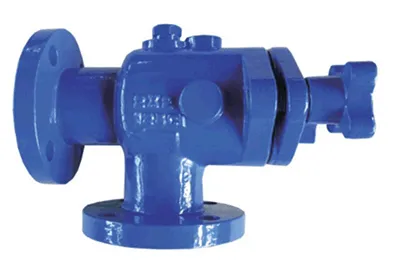ਦਸੰ. . 03, 2024 16:46 Back to list
Understanding the Role of a Strainer in Kitchen and Cooking Processes
Understanding the Importance of Strainers in Various Applications
Strainers are an essential component in numerous industries and applications, serving as a primary line of defense in maintaining the cleanliness and efficiency of fluid systems. Though they often go unnoticed, strainers play a crucial role in the overall operation and longevity of machinery and equipment.
At its core, a strainer is a device designed to filter out solids from liquids or gases. By preventing contaminants from entering pipelines, pumps, and other equipment, strainers help to safeguard the integrity of operational systems. The effectiveness of a strainer can greatly influence the performance of an entire system, making its design and application pivotal in various fields including plumbing, food processing, and chemical manufacturing.
Types of Strainers
There are several types of strainers, each tailored to meet specific operational needs. The most common include
1. Y-Strainers Shaped like the letter Y, these strainers provide good filtering capabilities and are often used in steam, piping, and other fluid systems. Y-strainers can be installed in horizontal or vertical lines, making them versatile for different setups.
2. Basket Strainers As the name suggests, these strainers feature a basket-like structure that captures large particles. They are typically used in larger flow systems where debris can accumulate more significantly.
3. Pipe Strainers These are installed directly in the pipeline and are designed to have minimal impact on flow. They are particularly useful in industrial applications where space is limited.
4. Magnetic Strainers Used primarily in systems that handle ferrous materials, these strainers utilize magnetic forces to attract and trap metal particles, thereby protecting equipment from wear and corrosion.
Applications of Strainers
strainer

Strainers find utility across a variety of sectors
- Water Treatment In municipal water systems, strainers help remove impurities and debris from water sources. This is critical to ensure that water is safe for consumption and meets health standards.
- Food and Beverage Industry In food processing, strainers are used to separate solid ingredients from liquids during production. This ensures product quality and consistency, making them vital in maintaining food safety standards.
- Oil and Gas The oil and gas industry relies heavily on strainers to protect expensive machinery from particulate contamination, which can lead to operational failures and costly downtime.
- HVAC Systems Strainers play a significant role in heating, ventilation, and air conditioning systems by ensuring that dust and debris do not clog filters or ducts, thereby improving air quality and system efficiency.
Maintenance and Best Practices
To ensure optimal performance, regular maintenance of strainers is essential. This includes cleaning or replacing the filter elements as necessary, inspecting for wear and tear, and ensuring that they are properly installed and functioning. Neglecting strainer maintenance can lead to blockages that compromise system efficiency, potentially resulting in equipment damage or failure.
Incorporating strainers into systems also requires an understanding of the specific application needs, such as the types of contaminants likely to be encountered, the operating pressure, and the required flow rates. Proper selection and installation of strainers can dramatically improve the reliability and lifespan of equipment.
Conclusion
In conclusion, strainers are a vital, yet often overlooked, component of various industrial systems. Their ability to filter out harmful contaminants can prevent costly repairs and downtime, ensuring smoother operations. As industries continue to evolve and prioritize efficiency and safety, the importance of selecting the right strainer cannot be overstated. By investing in high-quality strainers and implementing thorough maintenance practices, companies can protect their investments and streamline their processes for years to come.
Share
-
Reliable Wafer Type Butterfly Valves for Every IndustryNewsJul.25,2025
-
Reliable Flow Control Begins with the Right Ball Check ValveNewsJul.25,2025
-
Precision Flow Control Starts with Quality ValvesNewsJul.25,2025
-
Industrial Flow Control ReliabilityNewsJul.25,2025
-
Engineered for Efficiency Gate Valves That Power Industrial PerformanceNewsJul.25,2025
-
Empowering Infrastructure Through Quality ManufacturingNewsJul.25,2025